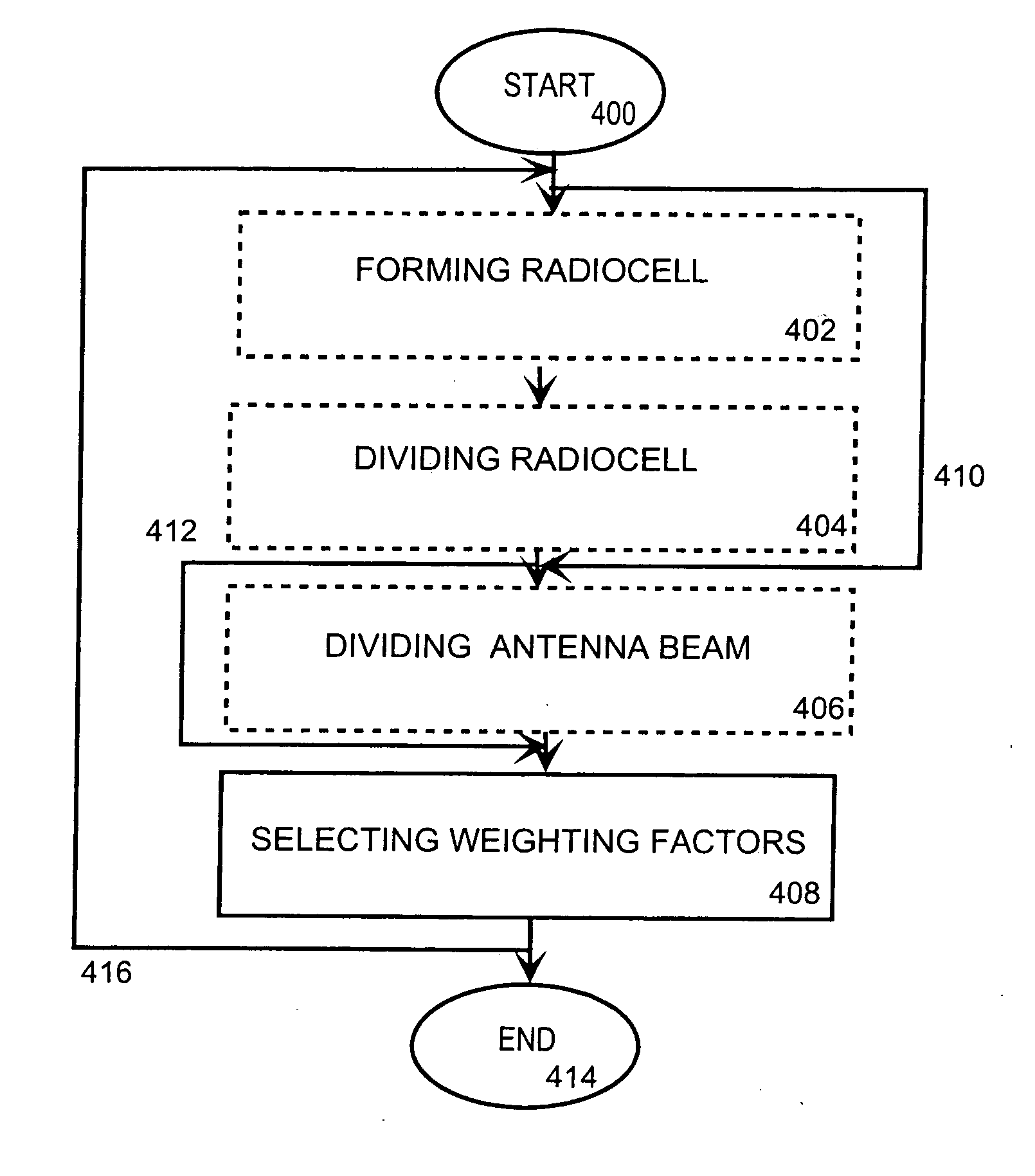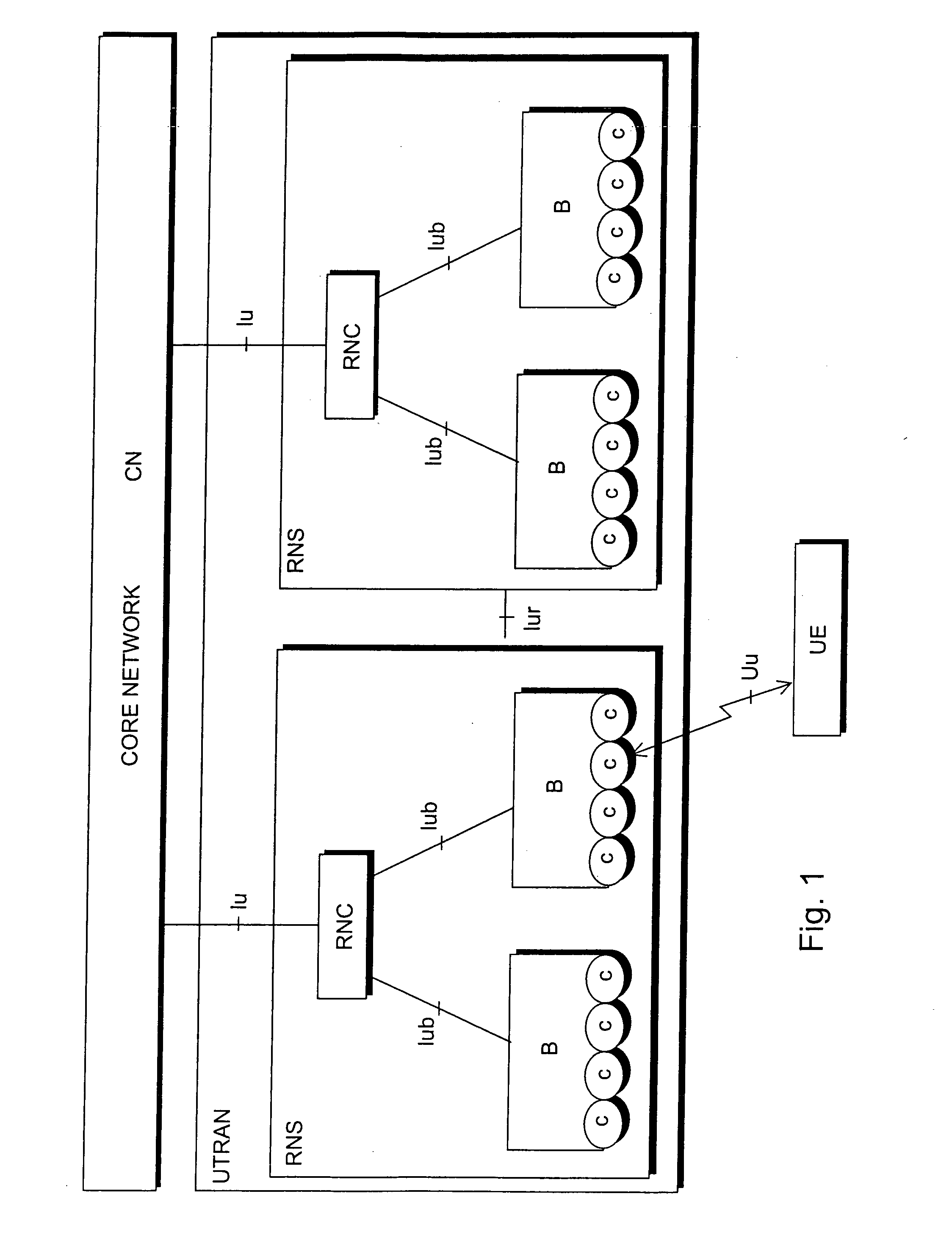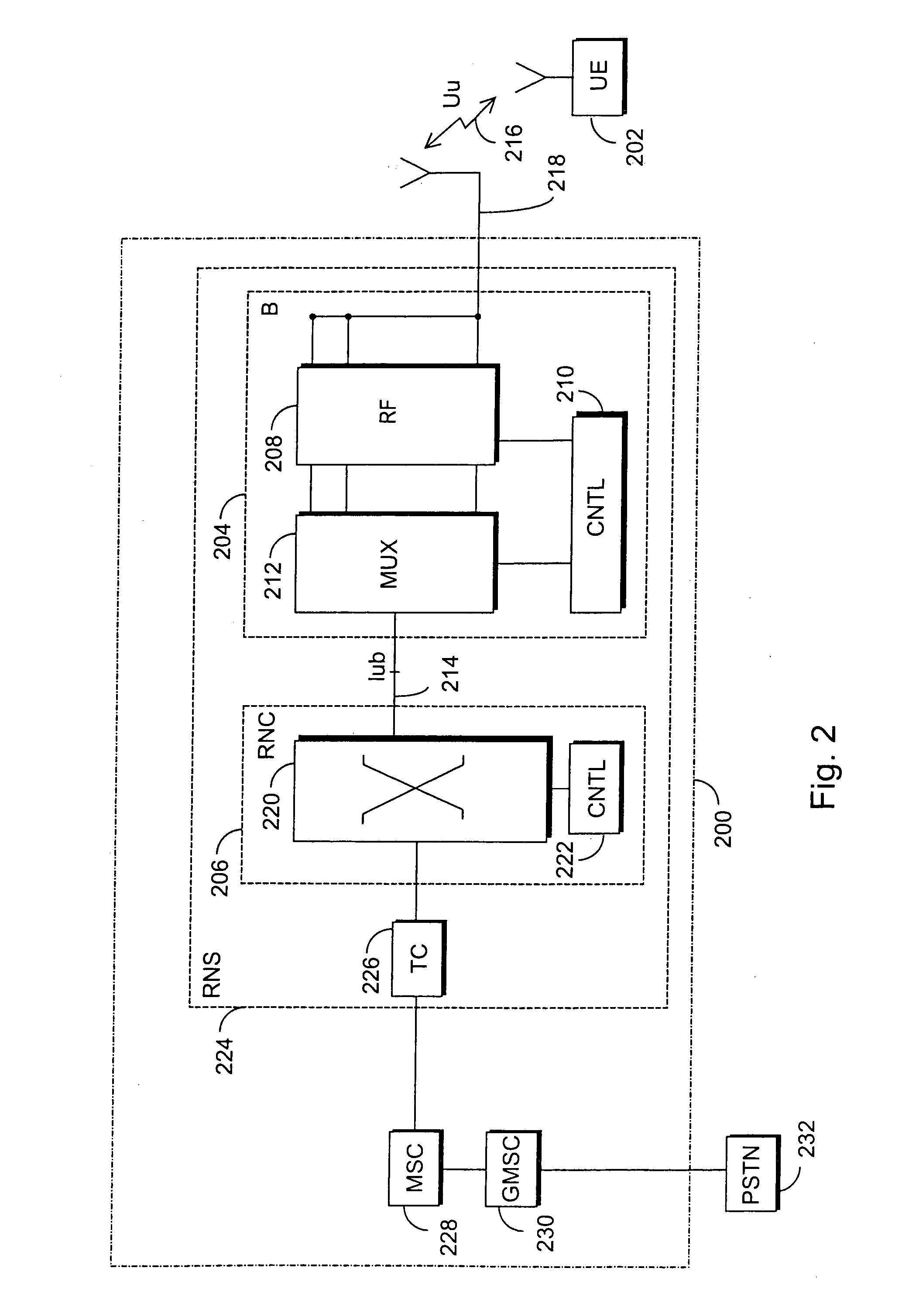Data transmission method and arrangement
a data transmission and data technology, applied in the field of data transmission methods and arrangements, can solve the problems of insufficient use of user-specific antenna beams, varies in the number of those needing radio resources, and costs during planning and implementation phases, and achieves better isolation and lower side-lobe levels
- Summary
- Abstract
- Description
- Claims
- Application Information
AI Technical Summary
Benefits of technology
Problems solved by technology
Method used
Image
Examples
Embodiment Construction
[0029] The solution according to the invention is particularly applicable to a CDMA radio system using a direct sequence technique. Other applications may include satellite systems, military telecommunication systems and private non-cellular networks. However, the solution of the invention is not restricted to them.
[0030] With reference to FIG. 1, the structure of a mobile telephone system is explained by way of example. The main parts of the mobile telephone system are core network CN, universal terrestrial radio access network of the mobile telephone system UTRAN and user equipment UE. The interface between the CN and the UTRAN is called Iu and the air interface between the UTRAN and the UE is called Uu.
[0031] The UTRAN comprises radio network subsystems RNS. The interface between the RNSs is called Iur. The RNS comprises a radio network controller RNC and one or more nodes B. The interface between the RNC and B is called Iub. The coverage area, or cell, of the node B is marked ...
PUM
 Login to View More
Login to View More Abstract
Description
Claims
Application Information
 Login to View More
Login to View More - R&D
- Intellectual Property
- Life Sciences
- Materials
- Tech Scout
- Unparalleled Data Quality
- Higher Quality Content
- 60% Fewer Hallucinations
Browse by: Latest US Patents, China's latest patents, Technical Efficacy Thesaurus, Application Domain, Technology Topic, Popular Technical Reports.
© 2025 PatSnap. All rights reserved.Legal|Privacy policy|Modern Slavery Act Transparency Statement|Sitemap|About US| Contact US: help@patsnap.com



